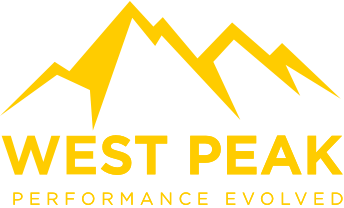Lessons from Musk and Zuckerburg: How NOT to lead an organisation
Lessons from Musk and Zuckerburg: How NOT to lead an organisation
Businesses are successful when everyone in the team is following the same vision. So what should you do when your leaders and employees pull in different directions? A lot can be learned from the poor leadership decisions of Elon Musk and Mark Zuckerberg.
A cohesive team that’s focused on the same goals is critical for business success. When leaders and staff pull in different directions, it’s like attempting to climb a mountain with everyone taking opposite paths.
We’ve seen how damaging it has been when Elon Musk publicly clashes with his staff at X (Twitter) and pursues policies that go against the company’s established principles.
Similarly, Meta CEO Mark Zuckerberg updated company policy to include remote work in 2020, touting its potential to boost prosperity within the next decade. However, in 2023 he called staff back to the office for three days a week.
Leaders who fail to take their team with them can create discord within the organisation, resulting in wasted energy expended on putting out internal fires.
Trust: The cornerstone of high-performing teams
Aligned teams achieve more. No matter how big or small the organisation, a successful team will have the same vision, mission and values at its heart: a guiding code that shows everyone how to act and succeed together.
Patrick Lencioni’s book The Five Dysfunctions of a Team shows how trust is the foundation upon which high-performing teams are built.
Leaders need to encourage team members to be open and honest, to hold each other accountable and prioritise team goals. They need to learn to resolve conflicts positively and ensure everyone is responsible for achieving results.
These steps create an atmosphere of transparency, collaboration and a shared commitment to success, which strengthens trust within the team.
“As a leader, Musk needs to sacrifice his right to express his individual beliefs for the good of the team.”
Cautionary tales from the world of leadership
Leaders like Elon Musk and Mark Zuckerberg may have built strong teams based on trust, but have later shown that unpredictable and alienating actions can undermine that faith.
Zuckerberg has been responsible for several instances where his actions chipped away at employee trust.
Before the recent return-to-work clash with employees there was The Cambridge Analytica Scandal of 2018, where Facebook data was collected on a massive scale for political profiling. The fallout significantly damaged employee trust in the organisation and their boss, and quickly put a stop to whispers of a potential Zuckerberg presidential run.
Sudden algorithm changes on Facebook also impacted media companies, leaving content creators feeling betrayed.
How could Zuckerberg have better handled these instances?
Zuckerberg could have been more transparent and responsive during the Cambridge Analytica Scandal, addressing mistakes swiftly and openly. Additionally, he could have communicated algorithm changes more effectively to media companies, considering their reliance on the platform.
The return-to-work mandate could have been better handled too. By providing a more gradual transition away from remote work and communicating the company’s need for change, Zuckerberg could have shown employees why the move was necessary.
“It’s not enough to explain your vision – your employees need to buy into it.”
Musk’s trust challenges
Similarly, Elon Musk, known for his pioneering vision and leadership, has faced challenges in maintaining trust within his workforce. Labour disputes at Tesla, dismissive comments about the seriousness of the Covid-19 pandemic, erratic behaviour on social media, and high-profile departures from leadership positions have all eroded employee trust.
As a leader, Musk needs to sacrifice his right to express his individual beliefs for the good of the team. Dismissing a global pandemic will have left team members doubting whether he is serious about looking after their safety.
His use of Twitter (now, X) in stock-related matters showed a lack of respect for his employees’ and investors’ need for stability. He also could have addressed staff concerns about his takeover of Twitter privately to foster a positive work environment.
The infinite game
In both cases, a greater focus on proactive communication, employee concerns, and a commitment to building and maintaining trust could have led to more sustainable leadership, aligning with Simon Sinek’s concept of playing an “infinite game” in business.
It’s not enough to explain your vision – your employees need to buy into it.
Success depends on a clear and compelling vision, open and honest communication, encouragement of participation and input from employees.
By aligning leaders and teams with the organisation’s core values – and demonstrating commitment to the vision through actions and decisions – the business can thrive.
Handling a leadership U-turn: your roadmap to success
No organisation is infallible, and leadership U-turns will inevitably be required. How leaders handle these situations is critical to keeping workers engaged, maintaining their trust and stopping them from seeking new opportunities.
This process also involves inspiring ‘employee discretionary effort’, where team members go above and beyond because they believe in your vision and feel a strong sense of belonging.
Getting to this point, though, requires serious groundwork. Here are the four steps required to get your leaders and employees better aligned.
1. Assess the situation – and explain why
Deeply understand why you’re having a change in direction. Be transparent and honest about the need for a U-turn and your rationale.
2. Rebuild trust and learn from your mistakes
Rebuilding trust and ensuring everyone is on board with the new plan is crucial. Use this change as a learning experience for everyone. It’s a chance to grow and improve.
3. Measure progress
Finally, be sure to set clear expectations, goals and milestones to track your progress after the change.
4. Stay on the roundabout
Keeping your staff and leaders aligned and engaged is a continuous process. The roadmap to success includes many roundabouts – cyclical processes of change that need to be followed again and again.
But building trust in the leadership and vision (especially if it’s changing) is the foundation of long-term success, particularly with the increased drive for leadership consistency and transparency that Gen Z are bringing into the workplace.
Link here to the original article by Ben Stocken https://www.trainingzone.co.uk/lead/culture/lessons-from-musk-and-zuckerburg-how-not-to-lead-an-organisation
Subscribe to our Podcast
Hosted by our very own Ben Stocken and Benjamin Wade our ‘How They Lead’ podcast aims to evolve the way people perform in leadership roles by showcasing a variety of high performance interviews with people from Patrick Kershaw from The RAF Red Arrows to CEO’s like Steve Phillips who help large brands like Pepsi, Mars and Unilever.
Get one step ahead – Click below to subscribe.










